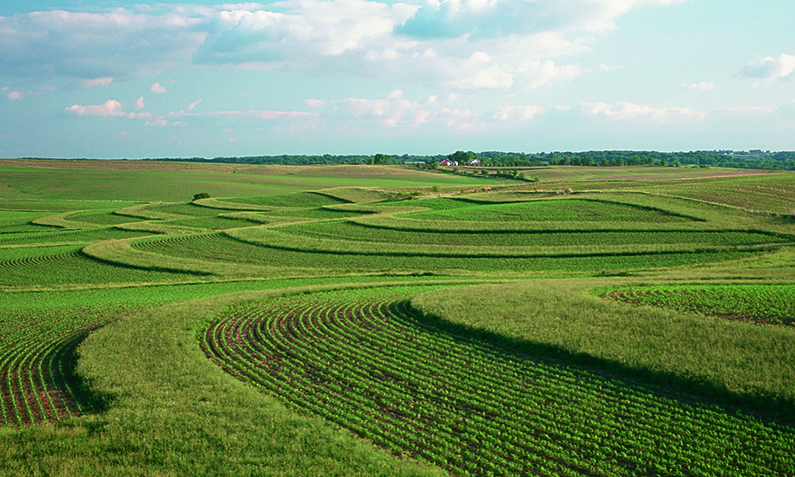Story County leaders are beginning to develop a ten-year water quality monitoring program for the county. The program will be the first of its kind in Iowa in which a county, its jurisdictions and supporting organizations have worked together to create such a planning document. The Ames based nonprofit Prairie Rivers of Iowa has organized and is facilitating the effort with planning team representing members from Story County, City of Ames, City of Gilbert, City of Huxley, City of Nevada, Leopold Center for Sustainable Agriculture, Izaak Walton League and the Story County Community Foundation.
According to City of Ames Municipal Engineer Tracy Warner Peterson, “Much more can be achieved as we work in collaboration rather than have all of the weight on one organization’s shoulders. The vast knowledge of team members through the collaboration brings together so much more potential than if we were each independently working to improve water quality.”
South Skunk River in Ames, Iowa
The team is focusing on establishing a ten-year plan to create a pathway for data collection for use towards education and guiding water quality improvements throughout the county. “It’s pretty clear that the quality of our water effects our quality of life – we drink it, we are made of it, we recreate in it, we count on it for production of our food, for green lawns and for trees which clean our air, and so much more,” relates Story County Conservation Director Mike Cox, “Therefore we want to understand our water quality so we can make improvements where needed”.
A primary goal for the plan’s creation includes supporting the quality of life in Story County by aligning water quality monitoring efforts with recreational, environmental education and watershed improvement projects. Secondly, the team plans to provide residents with tools to understand water quality concerns and solutions while actively participating in citizen science to improve local streams and lakes. “As water quality information becomes more available, land owners/residents in the watershed can then learn what we are each able to do to reduce nutrients thereby improving water quality that results in healthier habitat and enhanced recreational opportunities in our communities,” states Peterson.
Creeks run through many of the county’s public lands, city parks and backyards. They can be full of fish or lifeless, clear or muddy and choked with algae, safe for kids to play in or full of pollutants depending on the water quality as runoff enters the watershed.
NRCS photo
Many area farmers and developers are implementing conservation practices that address water quality problems. The team plans to celebrate the progress taking place and identify new areas where conservation practices can be most effective.
Even the smallest creeks and drainage ditches can influence water quality downstream. Bacteria ending up in the South Skunk River affects the use of the newly dedicated water trail while nitrogen, phosphorus and algae blooms winding down to the Gulf of Mexico contribute to the “dead zone” where water holds too little oxygen to sustain marine life.
State agencies only have resources to monitor the biggest rivers like the South Skunk River and Story County’s most heavily used beaches like Hickory Grove Lake. Only a small amount is known about backyard creeks without the efforts of volunteers. Ballard Creek in Huxley, West Indian Creek in Nevada and Minerva Creek in Zearing have rarely been tested.
The Squaw Creek Watershed Coalition, along with local volunteers, have been monitoring Squaw Creek and its tributaries for over ten years. Some initial findings suggest that many creeks in the watershed have elevated levels of nitrate and E. coli bacteria. That data led to a watershed plan and grant-funded project that Prairie Rivers of Iowa and partners used to help farmers install water quality conservation practices like a denitrifying bioreactor, 3532 acres of cover crops and 3719 acres of no-till practices.
The development of a ten-year water quality monitoring program for the county addresses the need for continued water-quality monitoring of Squaw Creek, its tributaries other streams in the county. It will raise awareness, guide improvements and track the progress towards conservation efforts. Prairie Rivers of Iowa will continue to organize water quality monitoring events, share monthly lab tests and develop educational materials.
Volunteers testing water quality in the South Skunk Watershed in Story County.
Peterson concludes, “Through collecting and analyzing water quality data throughout Story County, we are able to make more informed decisions, including financial priorities, regulations, and improvements to the land. By changing, we can improve water quality to enhance habitat, reduce flooding, create natural areas that are flourishing with potential to explore and enjoy more recreational opportunities.



